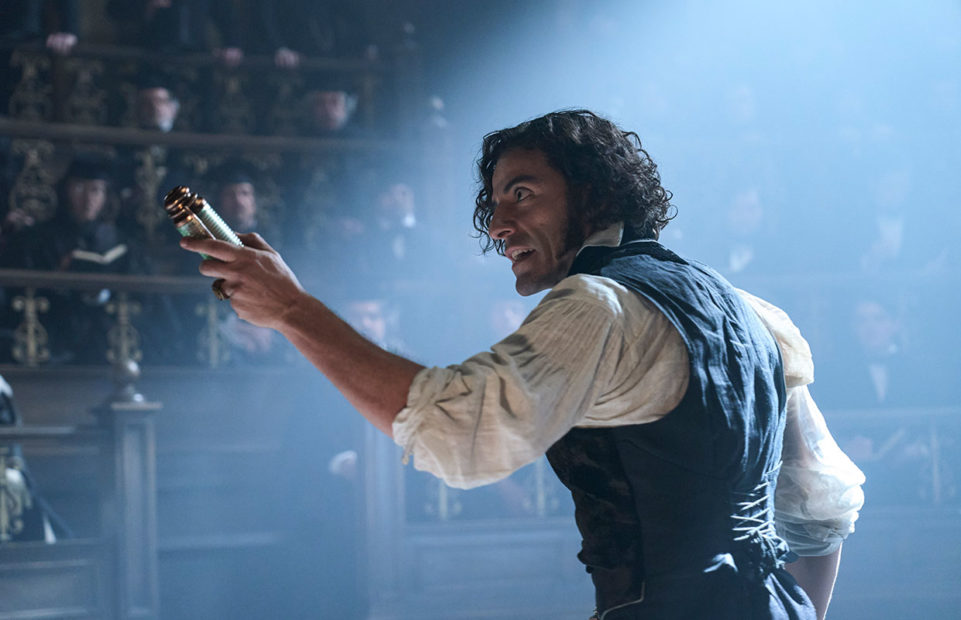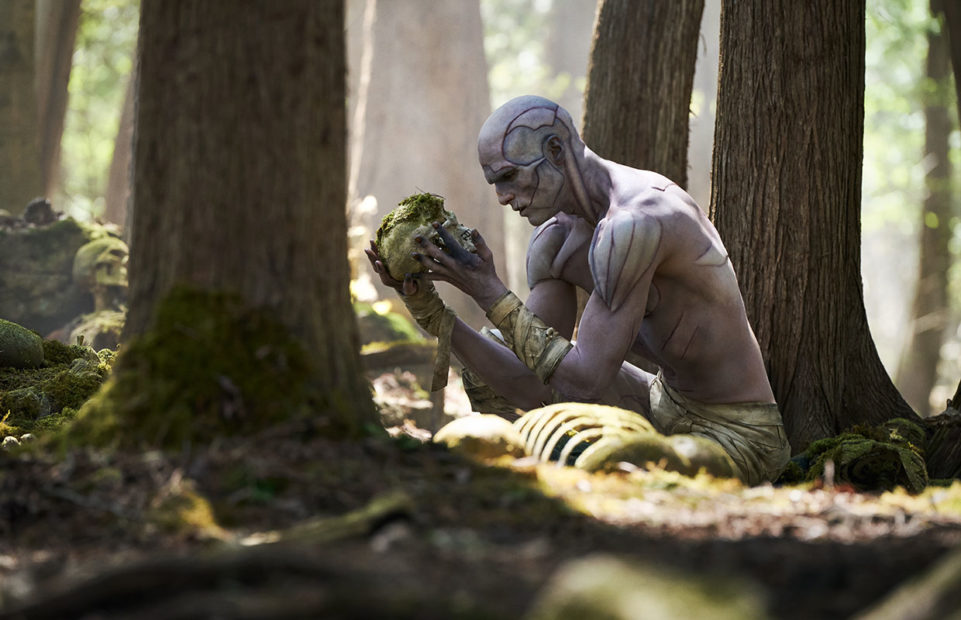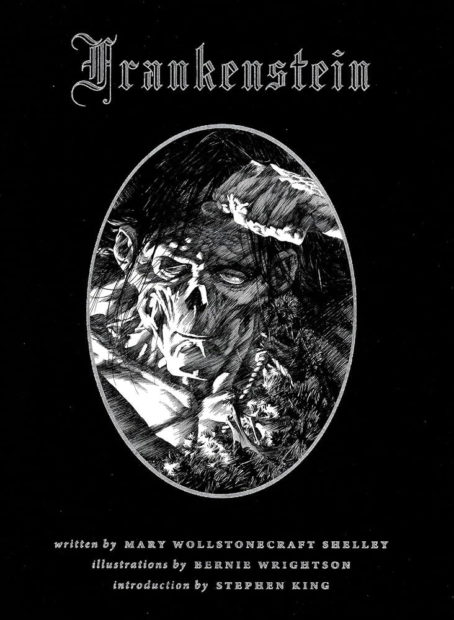Guillermo del Toro resurrects Mary Shelley’s myth in a gothic and deeply human vision. Premiered at the Venice Film Festival in late summer 2025, Frankenstein marks Guillermo del Toro’s long-awaited return to the themes that define his work: monstrosity, compassion, and creation itself. A US–Mexican co-production, the film opened in select theaters on October 17, 2025, and was released globally on Netflix on November 7, 2025.
A long-cherished dream fulfilled
Guillermo del Toro had dreamed of adapting Frankenstein for more than twenty years. The Mexican filmmaker, winner of two Academy Awards for The Shape of Water (2018), saw in Mary Shelley’s 1818 novel a cornerstone of modern fantasy and a profoundly human story. His Frankenstein is the culmination of that dream — a poetic reimagining of the myth of creation, exploring the limits of science, conscience, and human fear of otherness. This Netflix production was filmed mainly in Eastern Europe, combining natural landscapes and elaborate studio sets to evoke a world both romantic and timeless. Del Toro, who also wrote the screenplay, weaves together literary and visual influences: dark Romanticism, Symbolist painting, and nineteenth-century gothic iconography.

A story of kinship and solitude
The film follows the familiar outline of Shelley’s novel. Victor Frankenstein, a brilliant young scientist obsessed with unlocking the secret of life, succeeds in animating a body assembled from human remains. Horrified by his own success, he abandons his creation — triggering a tragic chain of events that drives both creator and creature to the frozen wastes of the Arctic. Del Toro structures his adaptation as a circular narrative. The story opens with the confrontation between Victor and his creature on the ice before circling back to reveal how their bond began. This cyclical form underscores the story’s fatal inevitability: like the life Frankenstein attempts to conjure, it is destined to repeat itself. Rather than a horror film, Frankenstein unfolds as a meditation on isolation and rejection. Victor, consumed by intellectual pride, is confronted with the emptiness of his own ambition. The Creature, meanwhile, embodies the anguish of an outcast seeking purpose and love in a world that rejects him.

A cast serving the fable
The film features a distinguished international cast led by: Oscar Isaac as Victor Frankenstein, portrayed as an inspired yet tormented man destroyed by his obsession; Jacob Elordi as the Creature, both terrifying and deeply moving; Mia Goth as Elizabeth Lavenza, the voice of love and conscience. They are joined by Christoph Waltz and David Bradley, completing the ensemble of scientists, confidants, and witnesses to tragedy. The score, composed by Alexandre Desplat, adds sweeping melancholy to this tale of creation and loss.

A visual world shaped by art and engraving
Visually, Frankenstein continues Del Toro’s signature aesthetic: intricate compositions, handcrafted sets, candlelit atmospheres, and tangible textures. Each shot feels like a painting brought to life. The film’s graphic design draws heavily on the illustrations by Bernie Wrightson*, created in 1983 for a deluxe edition of Mary Shelley’s novel. Wrightson, a legendary American horror artist, produced extraordinarily detailed black-and-white engravings of the story’s key scenes. Del Toro’s film echoes that imagery: bodies sculpted by light, faces emerging from shadow, and laboratories cluttered with the instruments of both science and superstition. This reference is more than visual homage — it expresses Del Toro’s desire to capture the physical, tactile essence of Shelley’s world. The laboratory, its objects, and its raw materials embody the blurred boundary between Enlightenment rationality and gothic imagination.
Themes and meanings
True to Shelley’s spirit, Del Toro approaches Frankenstein not as a story of terror but as a reflection on what it means to be human. The film questions the boundaries between creator and creation, pride and compassion, faith and reason. The Creature emerges as the moral core of the narrative — a being who sees more clearly than his maker the consequences of life without love. In this sense, Frankenstein extends the director’s ongoing exploration of misunderstood outsiders begun in Pan’s Labyrinth and The Shape of Water. Del Toro once again transforms monstrosity into poetry. Recurring motifs in his work resurface here: wounded innocence, fascination with the body and death, and beauty born from decay. Frankenstein thus becomes an allegory of responsibility — that of creators toward their works, and of humanity toward its own inventions, whether living beings, machines, or myths.

A milestone in Del Toro’s career
Del Toro’s Frankenstein functions as a synthesis of his artistic universe. It unites the tenderness of his storytelling with the grandeur of gothic fantasy and the gravity of moral fable. The director’s craft remains precise yet emotionally resonant, relying on atmosphere rather than spectacle. After exploring themes of otherness in Hellboy, Crimson Peak, and Nightmare Alley, Del Toro returns to the origin of the modern monster myth. His film pays homage to both James Whale’s Frankenstein (1931) and Bernie Wrightson’s illustrations, while asserting a vision uniquely his own — sensual, philosophical, and deeply empathetic. Reinventing Mary Shelley’s novel for the digital age, Del Toro delivers a work of maturity and restraint. Frankenstein (2025) celebrates the tactile art of cinema, the romantic imagination, and the fragile beauty of the beings we create — whether made of flesh, ink, or light.
 *Bernie Wrightson (1948–2017) was an American illustrator and comic book artist best known for his detailed pen-and-ink work and mastery of horror imagery. He first gained fame in the early 1970s as the co-creator of Swamp Thing for DC Comics, a tragic, human-like creature born from the natural world — a theme that echoed Wrightson’s fascination with the monstrous and the misunderstood. In 1983, Wrightson completed what is considered his masterpiece: an illustrated edition of Mary Shelley’s Frankenstein. The project took him seven years, during which he created nearly 50 full-page illustrations using meticulous cross-hatching inspired by 19th-century engravings. His vision of Shelley’s novel combines Gothic drama and emotional depth, portraying the creature not as a monster but as a tragic being. Wrightson’s Frankenstein remains one of the most celebrated achievements in horror illustration, blending classic literature and comic-book artistry with haunting beauty.
*Bernie Wrightson (1948–2017) was an American illustrator and comic book artist best known for his detailed pen-and-ink work and mastery of horror imagery. He first gained fame in the early 1970s as the co-creator of Swamp Thing for DC Comics, a tragic, human-like creature born from the natural world — a theme that echoed Wrightson’s fascination with the monstrous and the misunderstood. In 1983, Wrightson completed what is considered his masterpiece: an illustrated edition of Mary Shelley’s Frankenstein. The project took him seven years, during which he created nearly 50 full-page illustrations using meticulous cross-hatching inspired by 19th-century engravings. His vision of Shelley’s novel combines Gothic drama and emotional depth, portraying the creature not as a monster but as a tragic being. Wrightson’s Frankenstein remains one of the most celebrated achievements in horror illustration, blending classic literature and comic-book artistry with haunting beauty.
You could link the film with the study of Shine Bright LLCER File 2 Freaky Dreams on the Gothic.
Don't miss our biobox quizzes on Mary Shelley and Frankenstein's creature to use with your classes.
Frankenstein
Released on Netflix 7 November 2025
> Biobox: Mary Shelley & the Frankenstein’s creature
> Mother of Frankenstein
Tag(s) : "Alexandre Desplat" "Bernie Wrightson" "film" "Frankenstein" "gothic fiction" "Guillermo del Toro" "Horror classics" "Irish literature" "Jacob Elordi" "Literary adaptations" "Mary Shelley" "Mia Goth" "Netflix" "Oscar Isaac" "Richard Rothwell" "Romanticism" "Shine bright LLCER" "Venice Film Festival 2025"





